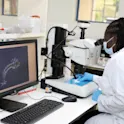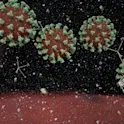Microplastics hinder the growth of microscopic marine animals
By Tania Fitzgeorge-Balfour, science writer Example of marine dinoflagellates (Dinophysis sp., not the species studied in the paper). Image credit: Rattiya Thongdumhyu/Shutterstock.com Plastic pollution is not just a problem for larger marine animals. Dinoflagellates, which are single-celled marine predators, can also ingest microplastic which in turn limits their growth and consequently their overall abundance. This has implications for the larger animals that feed on these microscopic predators, in terms of available food and the transfer of energy up the food chain. Microscopic marine predators can ingest microplastic, which in turn lowers their growth and overall abundance, finds a recent study published in Frontiers in Marine Science. This has implications for the larger marine animals that feed on these tiny predators, both in terms of available food and the transfer of energy up the food chain. “The plastic pollution of our oceans isn’t just affecting whales and sea turtles, it also impacts the small, microscopic animals towards the bottom of the food chain,” says Susanne Menden-Deuer, coauthor of this research and a professor at the Graduate School of Oceanography, University of Rhode Island, US. “Our study shows that some single-celled marine predators called dinoflagellates ingest microplastic particles, and when they do, […]














